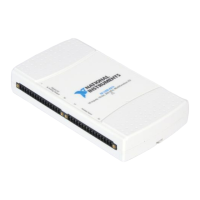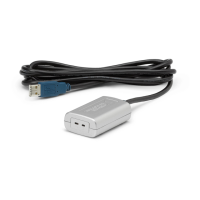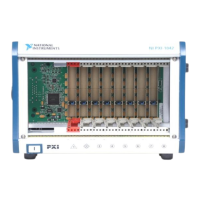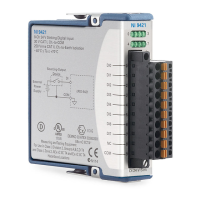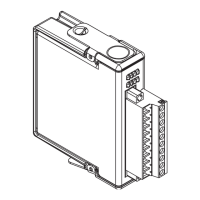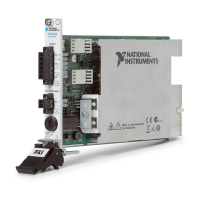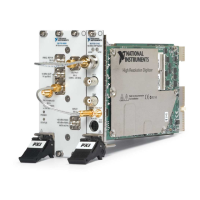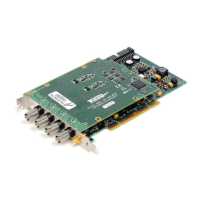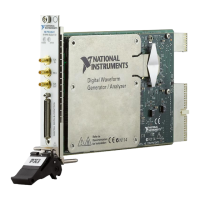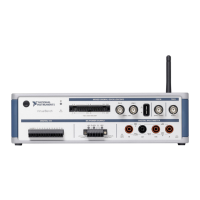Chapter 5 Analog Output
NI USB-621x User Manual 5-2 ni.com
• AO Sample Clock—The AO Sample Clock signal reads a sample
from the DAC FIFO and generates the AO voltage. Refer to the
AO Sample Clock Signal section for more information.
• Isolation Barrier and Digital Isolators—Refer to Chapter 9,
Isolation and Digital Isolators on USB-6215/6216/6218 Devices,
for more information.
AO Range
The AO range is ±10 V for USB-621x devices.
Minimizing Glitches on the Output Signal
When you use a DAC to generate a waveform, you may observe glitches
on the output signal. These glitches are normal; when a DAC switches from
one voltage to another, it produces glitches due to released charges. The
largest glitches occur when the most significant bit of the DAC code
changes. You can build a lowpass deglitching filter to remove some of
these glitches, depending on the frequency and nature of the output signal.
Visit
ni.com/support for more information about minimizing glitches.
Analog Output Data Generation Methods
When performing an analog outpu t operation, you can perform
software-timed or hardware-timed generations:
• Software-Timed Generations—Software controls the rate at which
data is generated. Software sends a separate command to the hardware
to initiate each DAC conversion. In NI-DAQmx, software-timed
generations are referred to as on-demand timing. Software-timed
generations are also referred to as immediate or static operations.
They are typically used for writing a single value out, such as a
constant DC voltage.
• Hardware-Timed Generations—A digital hardware signal controls
the rate of the generation. This signal can be generated internally
on your device or provided externally.
Hardware-timed generations have several advantages over
software-timed acquisitions:
– The time between samples can be much shorter.
– The timing between samples can be deterministic.
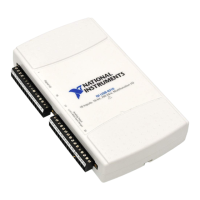
